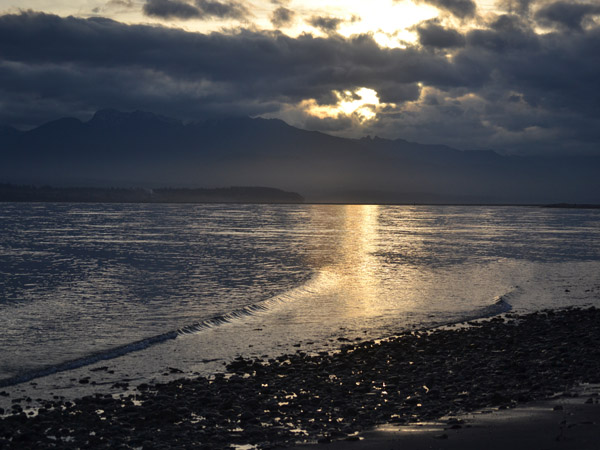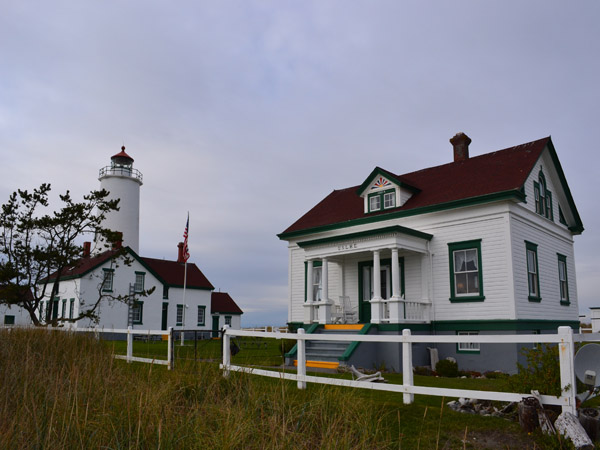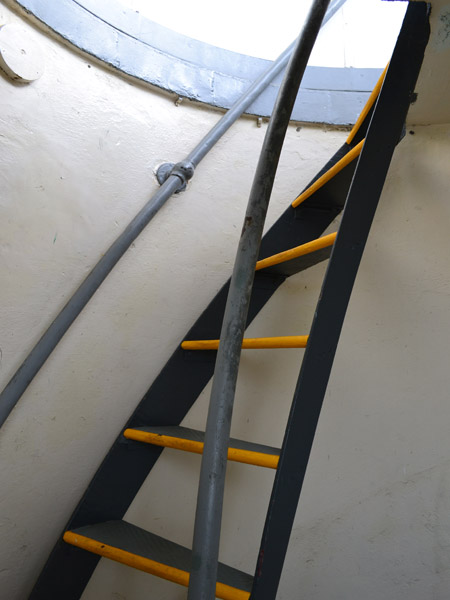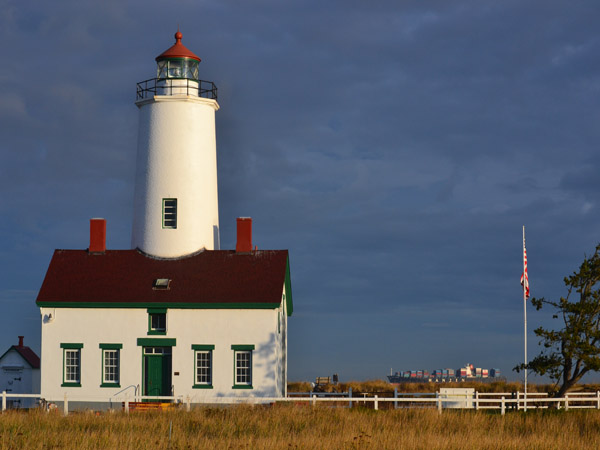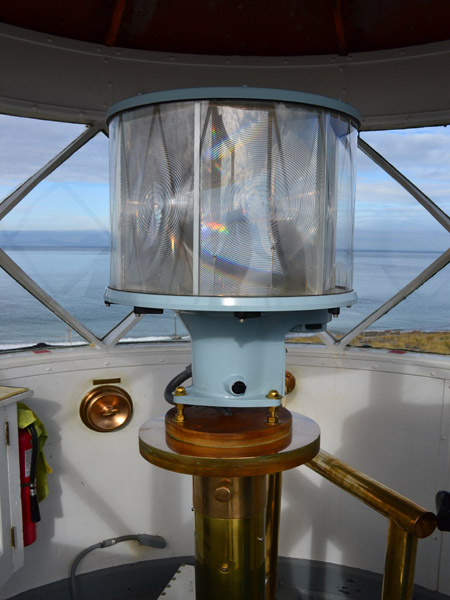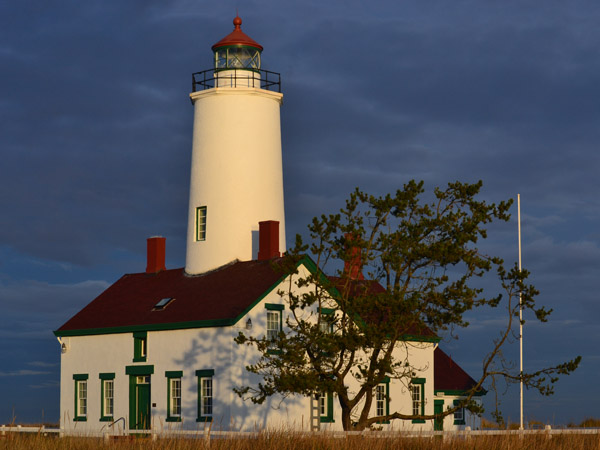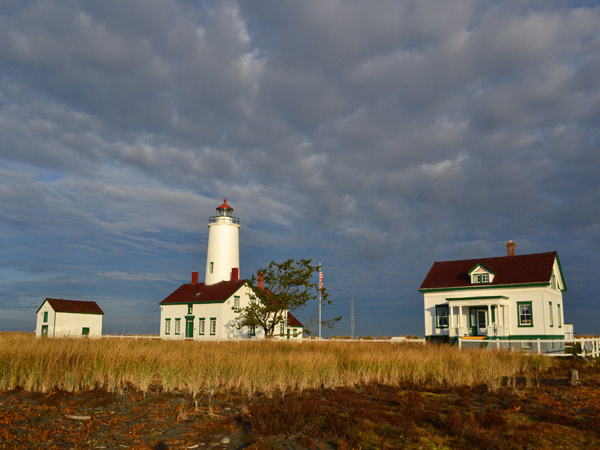A quiet moment on Dungeness Bay.
Author: Kay
Ken and Bill
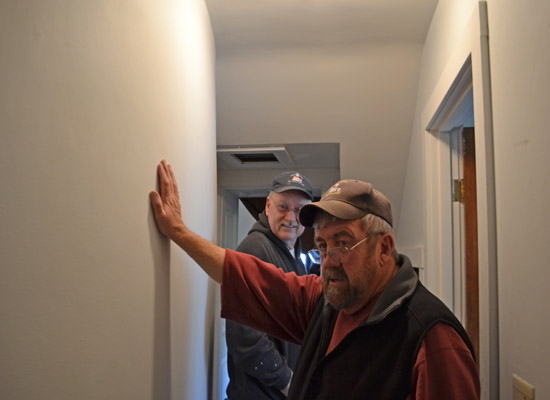
Bill (left) and Ken are two volunteer workers with the New Dungeness Light Station. While we stayed at the Light Station Bill painted a newly refurbished pump room and Ken did everything from checking a transformer to upgrading workers quarters. Bill serves on the Board of Directors of the New Dungeness Light Station Association and Ken has worked at the Station for many years. The board and workers pour love into the Light Station. It really shows.
Ken and Bill are standing in the hallway of the worker’s quarters as they take a break from painting. Ken’s hand is resting on the curved wall of the light tower.
Eagle watch
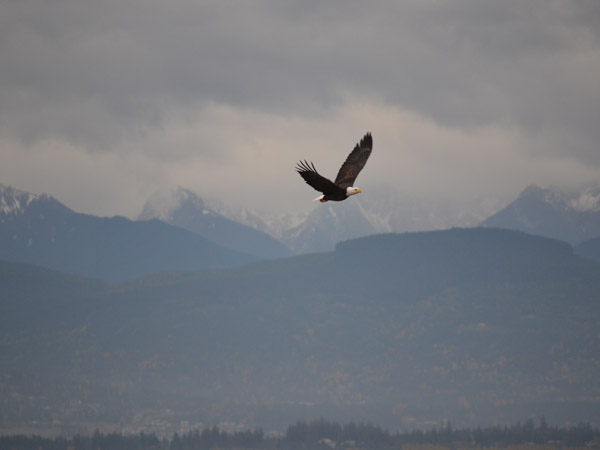
What’s not to like about staying next door to a national wildlife refuge? The New Dungeness Light Station borders on the Dungeness National Wildlife Refuge that is visited by over 250 species of birds, 41 species of land mammals, and eight species of marine mammals. We regularly saw three eagles that ranged about on the south side of the Light Station grounds and I was told by one volunteer that sightings can range up to a dozen at a time. Not too shabby!
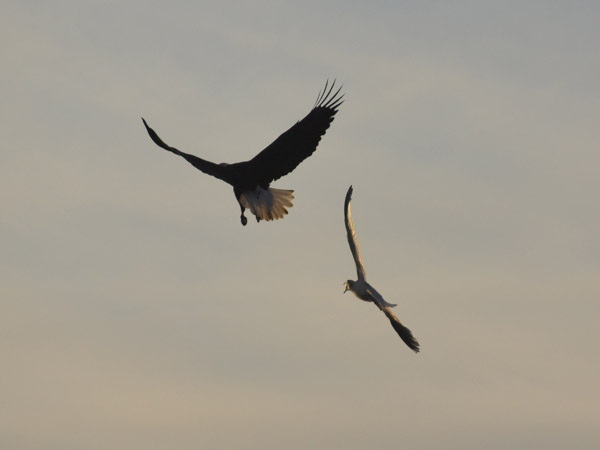
The wildlife seems to know the boundaries of the Light Station and generally kept well beyond the signs that keep visitors out of the 631 acre refuge. Our best sightings were airborne.
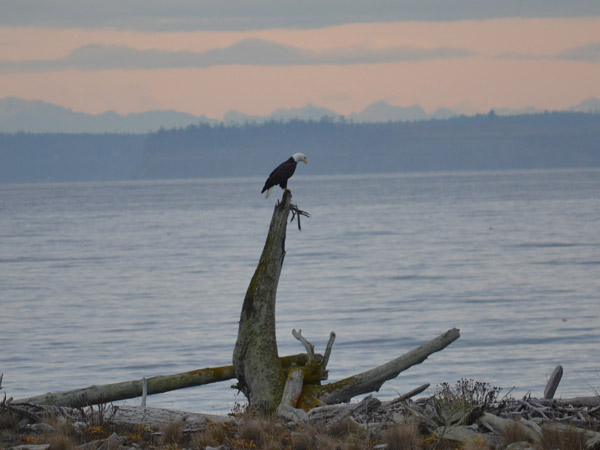
There are two favored perches beyond the boundaries of the light station, both of which made me envy the 400 mm. lenses of friends.
Keeper’s Quarters
Here are the Keeper’s Quarters at the New Dungeness Light Station. Keepers originally were all housed in rooms in the Lighthouse building. The Keepers Quarters were constructed for the Officer-in-charge and completed in 1904. Families lived there continually until the last Coast Guard keepers left in 1994. There are three bedrooms and two baths, kitchen, dining room, and comfortable living room. A full basement houses laundry facilities, a pool/ping-pong table, and storage. There is a small, cozy “library” upstairs under the center dormer that serves as a perfect spot to curl up with a good book.

The kitchen is done in a “mid-century” style. It’s well-equipped, clean, and pleasant. Keepers usually share dinners and coordinate menus before they go out to the Lighthouse. Some previous keepers posted their dinner menus in the daily log and they clearly weren’t roughing it. My vegetarian chocolate chili suddenly seemed terribly modest.
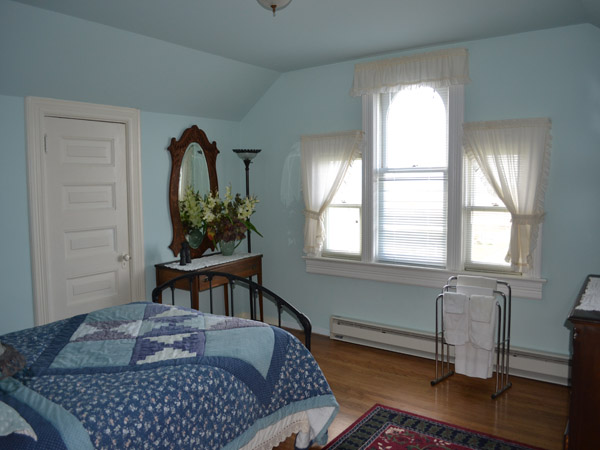
Here’s one of the three bedrooms. It looks directly onto the lighthouse building. Other rooms face the Strait of Juan de Fuca, Dungeness Bay and the Olympic Mountains, or an unobstructed view of the Cascade Mountains to the east. Despite the building’s age, continual use for over 100 years, and location in a harsh environment it is in very good condition. I’ve stayed in newer coastal buildings that soak up the salt air and exude dankness. This one is clean and cheerful.
Keepers at the New Dungeness Light Station pay a weekly per person fee to stay here. They bring their own food, and perform volunteer tasks such as leading lighthouse tours, cleaning, watering, and mowing the lawn. It’s not a free ride, but is a way to give back for the privilege of an extraordinary experience and contributes to the efforts that keep the Light Station in its laudable condition. It appears to be a well run, successful model for historic preservation.
The New Dungeness Lighthouse Station is located in the middle of the Dungeness National Wildlife Refuge. Tomorrow I’ll show you three of our eagle sightings.
Up you go
I didn’t count them but I recall being told there were 74 stairs up to the light room at the New Dungeness Lighthouse. The Lighthouse sees about 5,000 visitors per year, many of whom walk ten miles roundtrip on the Dungeness Spit to get there. Two visitors who came during our stint ran the last mile and several were into their 60s and 70s. It helps renew my faith in the fitness of U.S. citizens.
This open ladder is the final ascent into the light room of the Station.
Tomorrow we’ll look at the Keeper’s Quarters.
The light
The Strait of Juan de Fuca is a busy shipping channel and the Dungeness Spit is a serious navigational hazard as ships head into and out of Puget Sound and the more northerly straits leading to Canada. The New Dungeness Lighthouse flashes a beam of light that can be seen for 17 miles in clear weather, 12 times a minute and 17,280 times per day.
The lighthouse tower was originally 100 feet tall and the light was fueld by lard oil and magnified by a third order Fresnel lens. The tower was lowered to 63 feet in 1927 because of structural damage. The current light is a rotating six-sided bull’s-eye prism and is completely automated. The U.S. Coast Guard still changes the lights inside while the New Dungeness Light Station Association (NDLSA) maintains the building, grounds, and infrastructure of the Station.
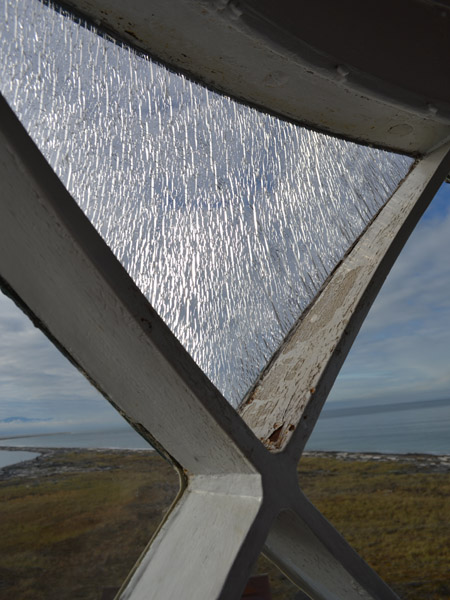
The environment on Dungeness Spit, where the lighthouse is located, is harsh. NDLSA has been replacing the unique, curved windows of the lighthouse. You can see above what time and the elements have done to them. The Association spends about $100,000 a year on upkeep and has a long to-do list. Funds come from keeper stays, donations, and grants. Despite its age, the Light Station remains clean and beautiful. As volunteer keepers we were allowed full access to the light and the exterior catwalk around the light room. Payback? My husband polished all the brass in the room and the stairwell, renewing a relationship with Brasso that he hadn’t had since his Navy days.
I’m a Keeper. . .
. . .A volunteer lighthouse keeper, that is. Alerted by our friends Miriam and Gene to a late cancellation, my husband and I scored a coveted weeklong stay at the New Dungeness Light Station in Sequim last week. There are only three ways to reach this beautiful and remote spot and none of them are easy: a five mile trek each way along the beach, tides permitting; by boat, landing by permit only; or, as a keeper, transported by the New Dungeness Light Station Association (NDLSA), with food, gear, and enthusiasm for a stint that includes greeting visitors, keeping up the lighthouse and keeper’s quarters, and other duties as assigned. Here’s the setting:
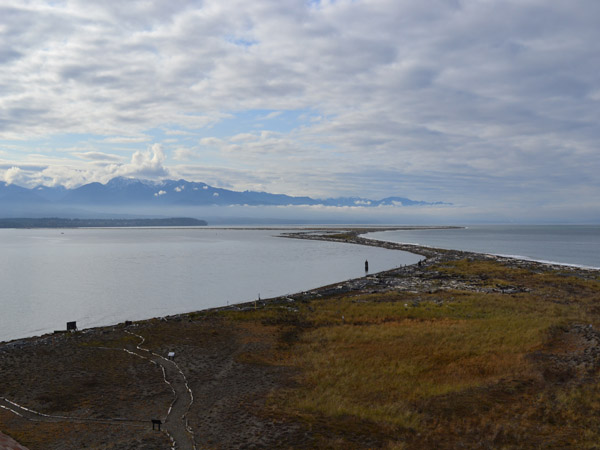
Completed in 1857, the lighthouse is one of the oldest in the Pacific Northwest and one of very few that allows the opportunity for a stay. After the U.S. Coast Guard withdrew its last keeper in 1994, the NDLSA stepped in to protect and preserve the Station and has continuously staffed the Station with volunteer keepers. It is an extraordinary place in an incomparable setting.
The Light Station property includes the Keeper’s Quarters, on the right above, completed in 1904 for the Officer-in-charge. Volunteer keepers stay in one of three bedrooms here, sharing a well-equipped kitchen, dining room, and comfortable living room. A 600-foot-deep artesian well provides water and a cable to shore provides power to the Station. NDLSA volunteer workers do much of the heavy lifting when it comes to site maintenance and they stay in quarters located in the original lighthouse building. The love and care poured into this very special place is evident at every turn.
I’ll post more pictures of the lighthouse, the keeper’s quarters, and its stunning environment in the coming days.
